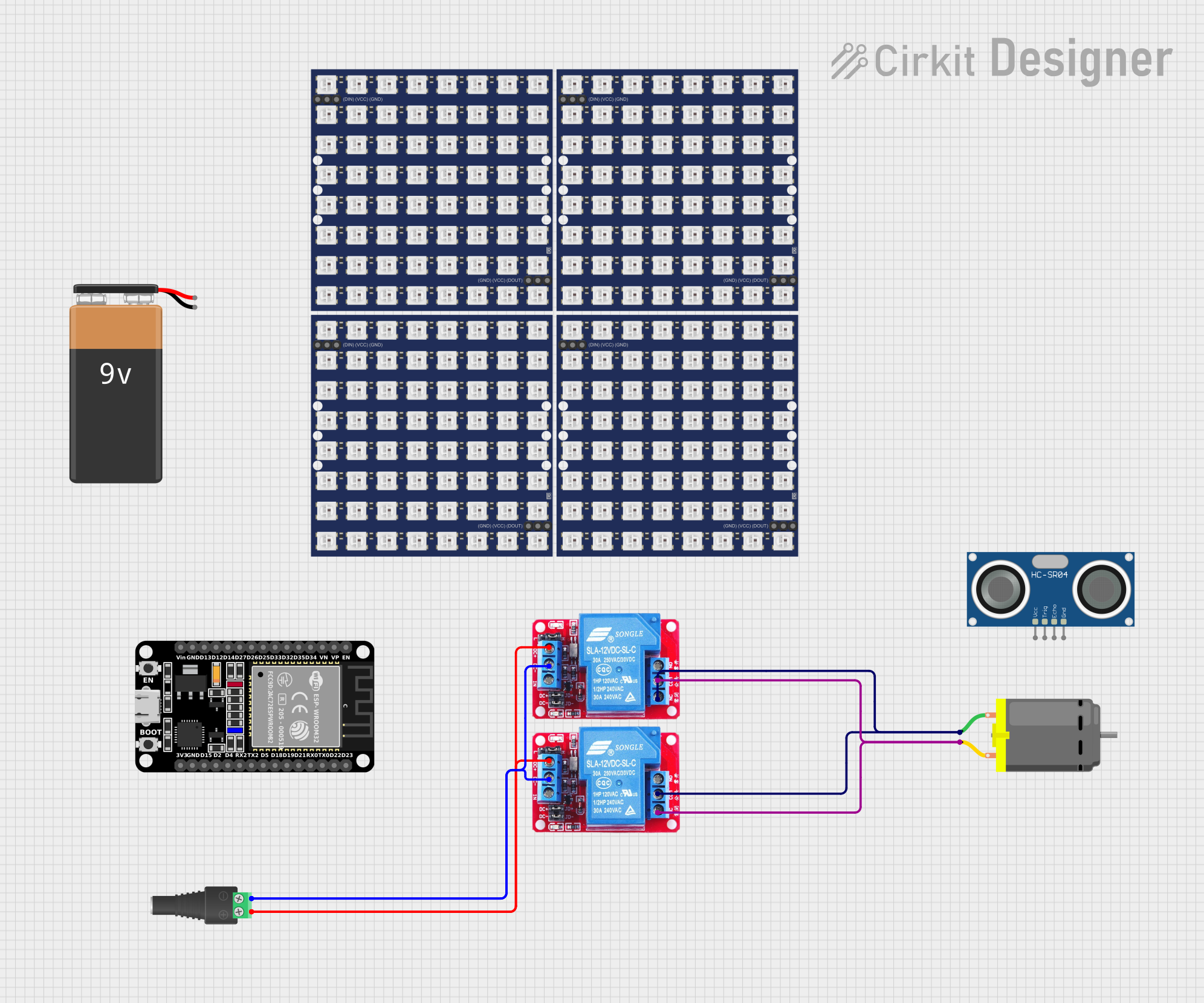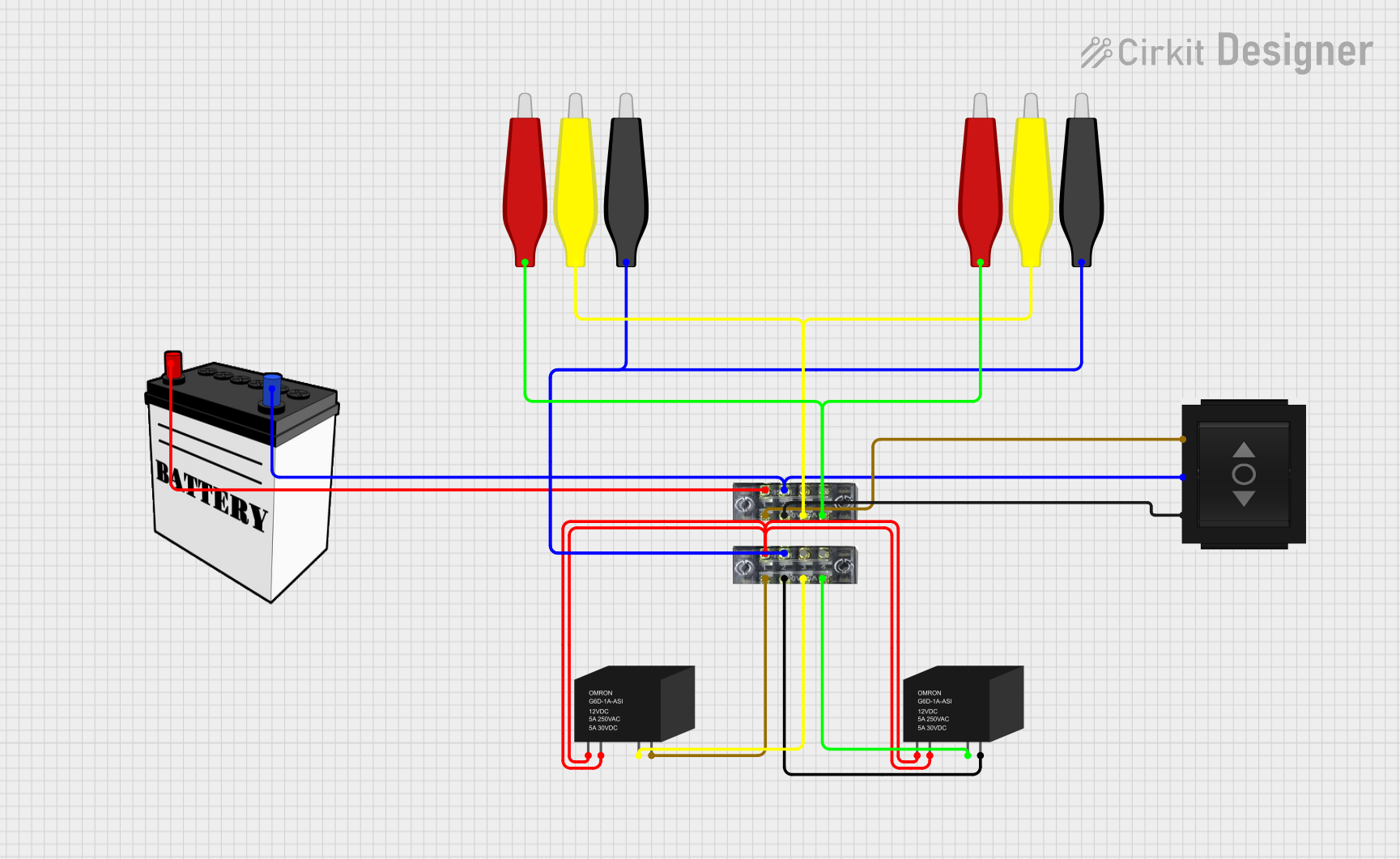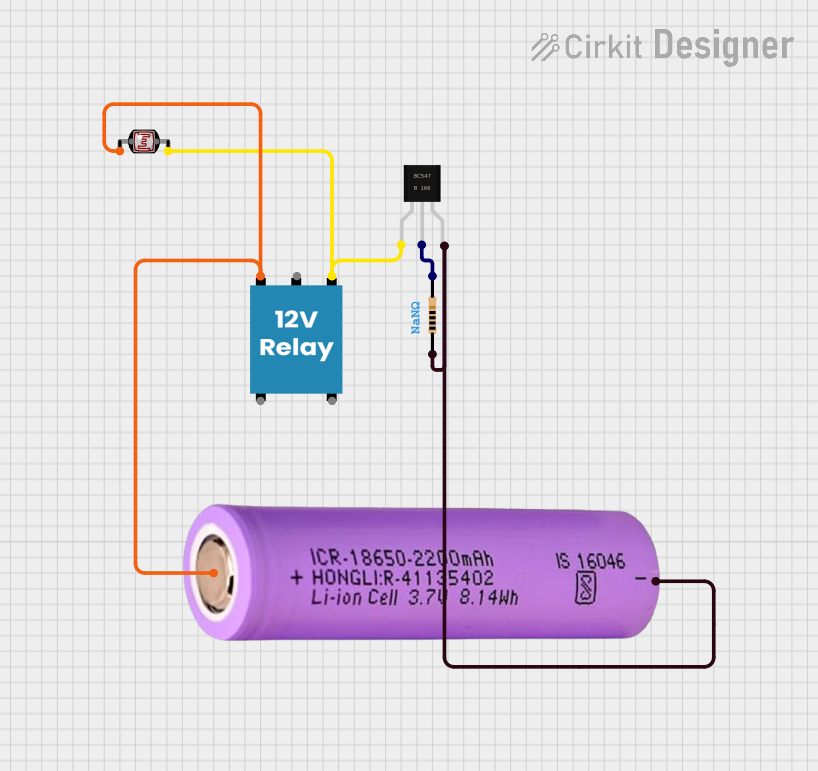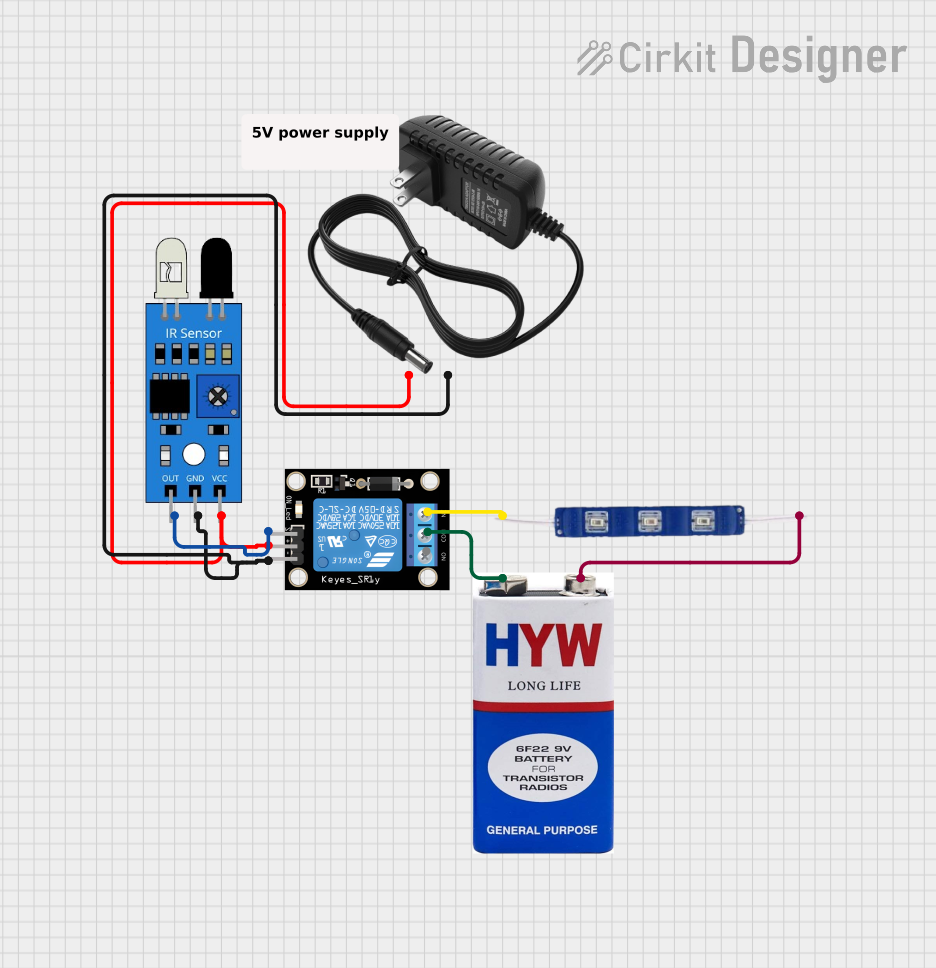
How to Use relay 12v: Examples, Pinouts, and Specs

 Design with relay 12v in Cirkit Designer
Design with relay 12v in Cirkit DesignerIntroduction
A 12V relay is an electrically operated switch that uses a 12-volt power supply to control a high-power circuit with a low-power signal. This component is widely used in various applications, including home automation, industrial control systems, and automotive electronics. By isolating the control circuit from the high-power circuit, relays provide a safe and efficient way to manage electrical loads.
Explore Projects Built with relay 12v

 Open Project in Cirkit Designer
Open Project in Cirkit Designer
 Open Project in Cirkit Designer
Open Project in Cirkit Designer
 Open Project in Cirkit Designer
Open Project in Cirkit Designer
 Open Project in Cirkit Designer
Open Project in Cirkit DesignerExplore Projects Built with relay 12v

 Open Project in Cirkit Designer
Open Project in Cirkit Designer
 Open Project in Cirkit Designer
Open Project in Cirkit Designer
 Open Project in Cirkit Designer
Open Project in Cirkit Designer
 Open Project in Cirkit Designer
Open Project in Cirkit DesignerTechnical Specifications
Key Technical Details
| Parameter | Value |
|---|---|
| Operating Voltage | 12V DC |
| Trigger Voltage | 5V DC (for control) |
| Current Rating | 10A @ 250V AC / 10A @ 30V DC |
| Contact Type | SPDT (Single Pole Double Throw) |
| Coil Resistance | 400Ω |
| Switching Time | 10ms (operate), 5ms (release) |
| Dimensions | 19mm x 15.5mm x 15mm |
Pin Configuration and Descriptions
| Pin Number | Pin Name | Description |
|---|---|---|
| 1 | NO | Normally Open contact |
| 2 | COM | Common contact |
| 3 | NC | Normally Closed contact |
| 4 | VCC | 12V DC power supply for the relay coil |
| 5 | GND | Ground |
| 6 | IN | Control signal input (typically 5V from a microcontroller) |
Usage Instructions
How to Use the Component in a Circuit
Power Supply:
- Connect the VCC pin to a 12V DC power supply.
- Connect the GND pin to the ground of the power supply.
Control Signal:
- Connect the IN pin to a digital output pin of a microcontroller (e.g., Arduino UNO).
Load Connection:
- Connect the high-power circuit to the COM and NO/NC pins based on the desired operation:
- NO (Normally Open): The circuit is open when the relay is not energized.
- NC (Normally Closed): The circuit is closed when the relay is not energized.
- Connect the high-power circuit to the COM and NO/NC pins based on the desired operation:
Important Considerations and Best Practices
- Isolation: Ensure proper isolation between the control and high-power circuits to prevent damage to the microcontroller.
- Flyback Diode: Use a flyback diode across the relay coil to protect against voltage spikes.
- Current Rating: Do not exceed the current rating of the relay contacts to avoid damage.
- Heat Dissipation: Ensure adequate ventilation or heat sinking if the relay operates at high currents for extended periods.
Example Circuit with Arduino UNO
/*
* Example code to control a 12V relay with an Arduino UNO.
* The relay is connected to digital pin 7.
*/
const int relayPin = 7; // Define the relay control pin
void setup() {
pinMode(relayPin, OUTPUT); // Set the relay pin as an output
digitalWrite(relayPin, LOW); // Initialize the relay as off
}
void loop() {
digitalWrite(relayPin, HIGH); // Turn the relay on
delay(1000); // Wait for 1 second
digitalWrite(relayPin, LOW); // Turn the relay off
delay(1000); // Wait for 1 second
}
Troubleshooting and FAQs
Common Issues Users Might Face
Relay Not Switching:
- Solution: Ensure the control signal voltage is sufficient (typically 5V for the IN pin). Check the power supply voltage (12V) and connections.
Chattering or Buzzing:
- Solution: Verify the power supply is stable and capable of providing the required current. Check for loose connections.
Overheating:
- Solution: Ensure the relay is not exceeding its current rating. Provide adequate ventilation or heat sinking.
No Response from Load:
- Solution: Check the wiring of the load circuit. Ensure the load is connected to the correct relay contacts (COM and NO/NC).
FAQs
Q: Can I use a 12V relay with a 5V microcontroller?
- A: Yes, the control signal (IN pin) typically operates at 5V, but the relay coil requires a 12V power supply.
Q: What is the purpose of a flyback diode?
- A: A flyback diode protects the circuit from voltage spikes generated when the relay coil is de-energized.
Q: Can I control multiple relays with a single microcontroller?
- A: Yes, you can control multiple relays using different digital output pins on the microcontroller.
By following this documentation, users can effectively integrate a 12V relay into their projects, ensuring safe and reliable operation.